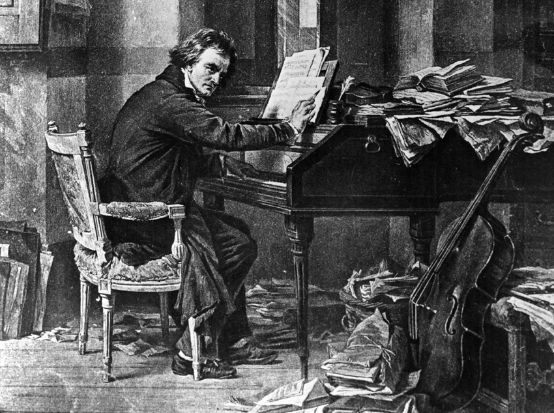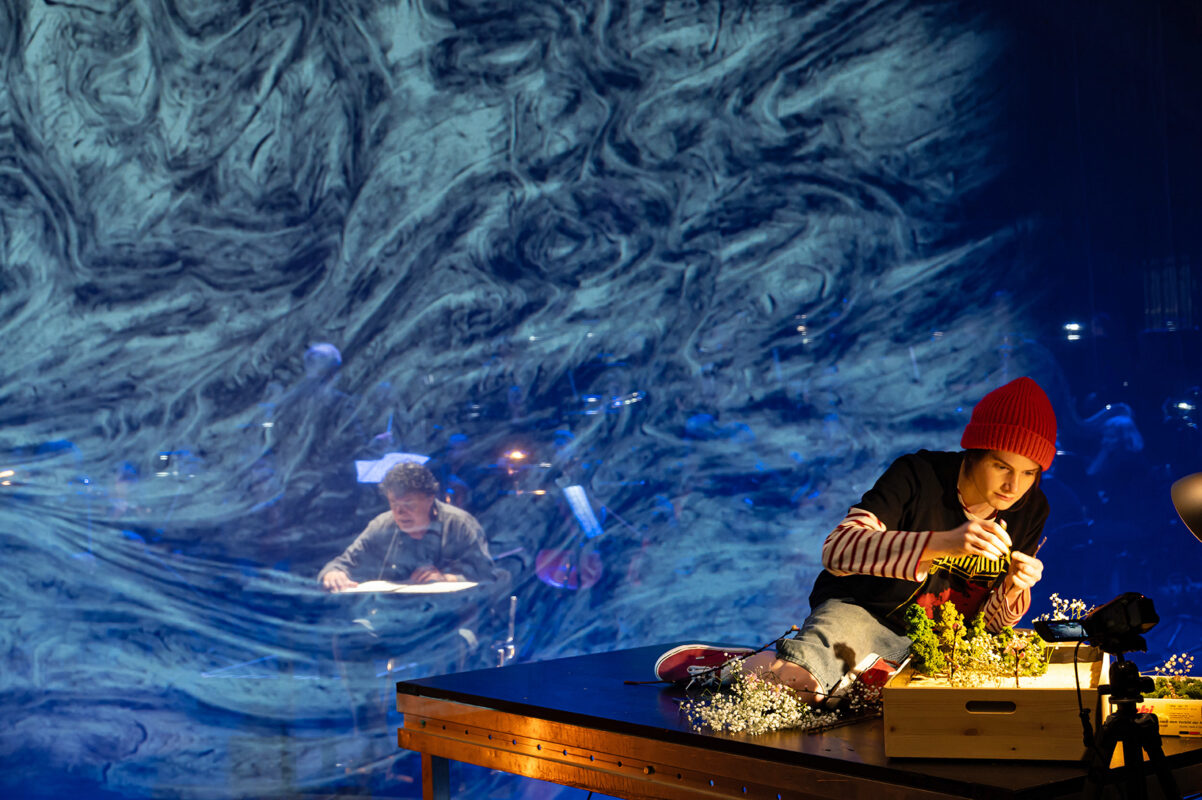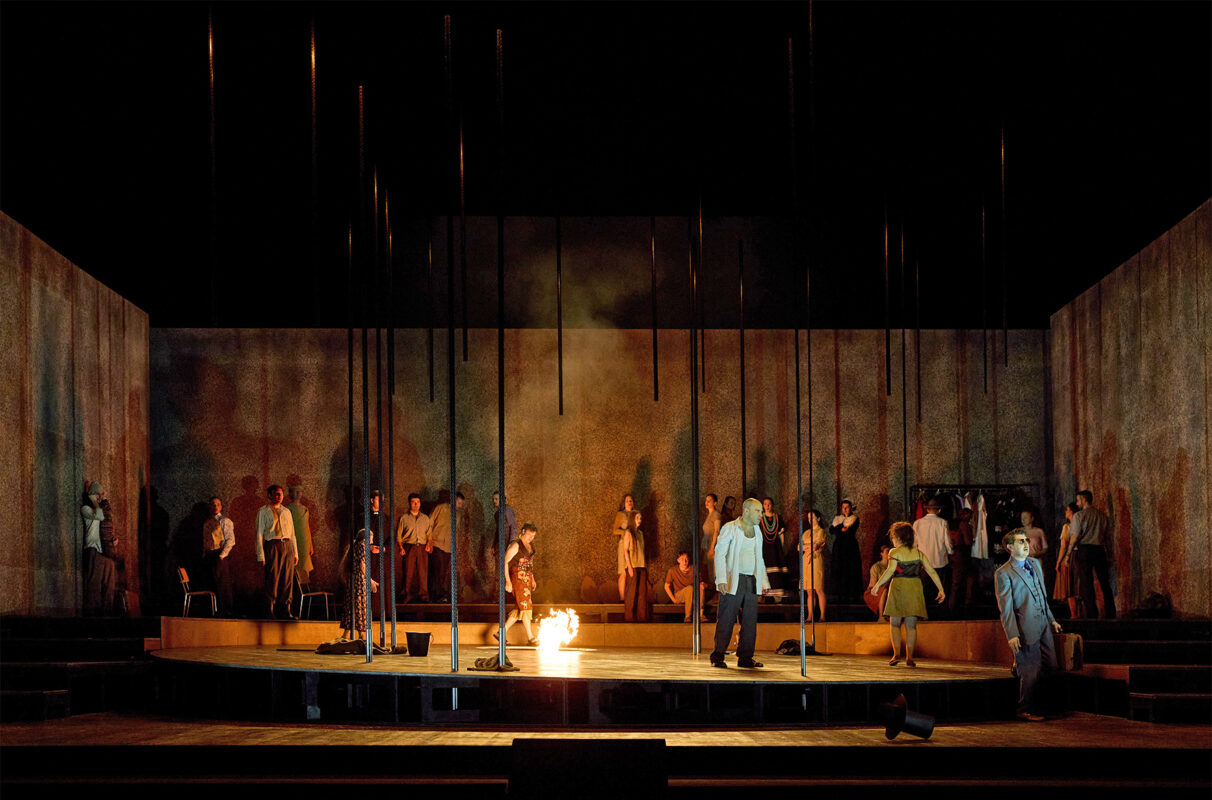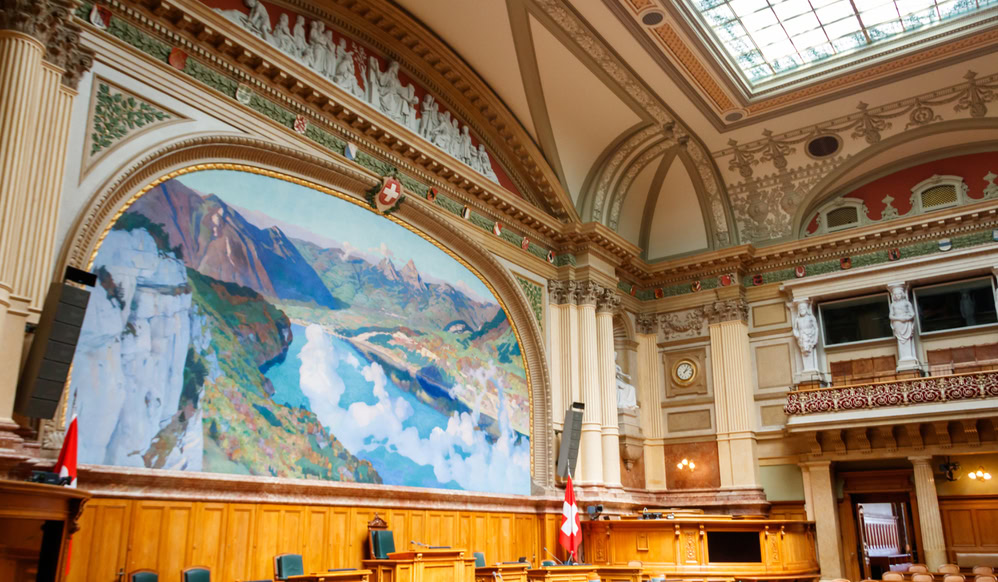"Music as expression"
A symposium at the Bern University of the Arts provided an insight into current interpretation research. The focus was on Beethoven's works and their artistic rendition.

"The Bern symposium from September 13 to 16, 2017, was all about Beethoven, with not only the established research focus on interpretation at Bern University of the Arts (HKB), but in particular three current projects supported by the Swiss National Science Foundation providing the occasion and framework for the four-day forum: While the project "From Lecture to Interpretation" examines the transformation of interpretation practice using the example of Beethoven's solo piano works, "Annotated Scores" focuses on the conducting scores and orchestral materials with notes of those works that were important to Richard Wagner in his perspective on the conductor. A third research project, "Embodied Traditions of Romantic Musical Practice", deals with instructive 19th-century music editions in their description of practical musical details and attempts to transfer these to the present day using the "embodiment" method. Based on this thematically wide-ranging field, Beethoven's works and their interpretative realization were always the focus, but at the same time fundamental concepts and methods were clarified and aspects of arrangement as interpretation, organological questions and, last but not least, music-theatrical elements were considered. A total of forty-five lectures thus formed an informative whole - supplemented by concert lectures and film documentaries, which fitted perfectly into the program and at the same time pointed beyond it.
"The true reproduction is the X-ray photography of the work. Its task is to make visible all relations, moments of context, contrast, construction, which lie hidden beneath the surface of the sensual sound - by means of the articulation of the sensual appearance." - With these words by Theodor W. Adorno, Thomas Gartmann, Head of the Research Department at the HKB and the Bern Graduate School of the Arts, welcomed the musicologists, musicians and audience to the university's concert hall.
Interpretation and tradition
The first five lectures then focused entirely on 19th century piano music - together with the question: "What does interpretation mean, what can interpretation achieve?" John Rink (Cambridge) showed that interpretation is not only a field of tension between musical text and performance, but that "creative" performance of music should also be differentiated from pure interpretation, among other things by means of notation-specific peculiarities in Chopin's piano works. Despite this highly specific, sometimes idiosyncratic notation, the Chopin interpreter should, according to Rink, not neglect his own ingenuity - this is the only way to create interesting, but also questionable and therefore debatable interpretations. The two following presentations by Carolina Estrada Bascunana (Tokyo) and Manuel Bärtsch (Bern) were also dedicated to musical expression beyond the musical text. Both in the case of Enrique Granados' pupils and in various interpretations of Beethoven's op. 111, source-critical work with various editions, pedagogical handbooks and recording systems such as the Welte piano rolls proved to be indispensable in order to get close to the individual interpreter and to be able to place his or her playing style in a possible tradition. Common to both lectures was the critical perspective on the "sacred interpreter who moves in an auratic, metaphysical context" (Bärtsch) - a view that should be revised. While Georges Starobinski (Basel) also devoted himself to the last sonata op. 111, among other things, and dealt with the performance designation "semplice" in Beethoven in a fine and detailed presentation, Kai Köpp (Bern) focused on methodological approaches to interpretation research. The diverse genres of sources (user interfaces from organology, instructions, sound documents and moving images) examined in the various research projects at the HKB provided rich illustrative material for locating historical interpretation research between historical and systematic musicology.
Turning point to modernity
László Stachó (Budapest) ventured into the 20th century by comparing recordings by pianists in the Liszt tradition such as Eugen d'Albert, Béla Bartók and Ernő Dohnányi with those of Igor Stravinsky and positioning their interpretations between a language-bound and a more metrical-structuralist approach. It was clear from the audio documents that Igor Stravinsky corresponded most closely to this objective approach to music-making, which was particularly characteristic of the period between the wars. However, Stachó did not stop at merely analyzing the interpretations; he also made the connection between the observed modernist aesthetics and "music as a spatially extended object": it was up to the interpreter to mediate between time and space and to decide whether to play with a broad or narrow structure. After a further contribution, which examined Anton Webern's music from the perspective of tempo and intonation, the audience was able to attend Robert Levin's (Boston) concert lecture, one of the highlights of the symposium. Under the title "Wende zur Moderne. Beethoven as the executor of C. Ph. E. Bach", the world-famous pianist and musicologist gave an eloquent, intense and direct musical and linguistic presentation. Starting with a performance of some of Carl Philipp Emanuel Bach's piano fantasies, he demonstrated their influence on composers such as Haydn, Mozart and Beethoven. Levin's synthesis of practice and reflection alone was highly impressive. However, the artist took the "turn to modernity" quite literally when he explicitly addressed the young participants and listeners, advocating a commitment to new music. After all, being involved as a performer in the performance of new repertoire means taking part in the writing of musical history.
Notation and performance
Approaching the complex relationships between work, composer and performer, especially when the work was created decades ago, naturally requires conscientious methodological work. The second day of the symposium therefore focused on the diversity of these methods. Clive Brown (Leeds) addressed the gap between practice-oriented research and professional music-making: Many of today's commercial sound recordings would testify to little understanding of the relationship between notation and performance as this was seen by composer and performer in the 18th and 19th centuries. Based on one of his specialist areas, interpretation research in the field of string instruments, Brown showed how he envisioned bridging this gap by means of historically informed editions and the teaching of historical playing techniques. Neal Peres da Costa (Sydney) also demonstrated how informative a comparison between a surviving recording and the edition of the recorded work can be - extensively - at the piano during his lecture. His method of imitating historical sound documents was able to highlight improvisational elements and rhythmic freedoms that were part of Carl Reinecke's or Jan Ladislav Dussek's playing - admittedly without any of this being evident in the musical text at the time. The presentation by Sebastian Bausch (Bern) once again dealt with the scientific and aesthetic significance of piano rolls, albeit from the special perspective of oral history, the questioning of specialists in the field of reproduction pianos and their appropriate regulation. This large chapter was rounded off by a lecture by Olivier Senn, who presented a new method of computer-aided measurement of agogics - and thus dealt with a fine interpretative detail that was and is relevant across epochs and styles. He demonstrated how a tempo curve can be derived from musically expressive timing using the example of Debussy's recording of the Danseuses de Delphes from the year 1912.
Speaking edits
"I have transformed a single sonata of mine into a quartet for violin instruments [...], and I know for certain that no one else will be able to imitate me so easily." The block "Arrangement as interpretation" was introduced with Beethoven's own words. Thomas Gartmann dedicated a detailed analysis of voice leading, dynamics and articulation to Beethoven's own quartet arrangement of his Piano Sonata op. 14 No. 1 and pointed out the scientific value of this arrangement. Michael Lehner (Bern) drew attention to a central but hitherto little-researched medium of dissemination from the 18th to 20th centuries. The cultural technique of score playing was examined as an "interpretation through reduction", in particular on the basis of the recordings that Gustav Mahler and Richard Strauss made of their own orchestral works. What conclusions can be drawn from phrasing, tempo and rhythm with regard to the orchestral version?
This was perfectly followed by the concert lecture by Ivo Haag and Adrienne Soós (Lucerne): Like the piano reductions, the four-hand arrangements of orchestral works were also a tried and tested means of publicizing their own compositions. On this afternoon, the piano duo placed the arrangements of Brahms' symphonies at the center of practical performance questions. After the forum was opened up to young people interested in research that evening in small presentations on a wide variety of topics, a small master class was even held: the specialists in interpretation research took on cellist David Eggert (Bern) and pianist Gili Loftus (Montréal), who - naturally at a Beethoven symposium - played works by the composer, but in the context of the period around Clara Schumann and the performance practice prevailing at the time.
The third day of the symposium was thematically peripheral and yet much closer to our time. The speakers led by Leo Dick (Bern) presented the results of their research in the fields of music theater, choreography, dance and literary studies. The resulting change of perspective on Beethoven's work and person proved to be just as exciting and informative as the overarching concept of "mise en scène as interpretation" in its various and transdisciplinary forms.
The role of the instruments
Various experts in the field of organology, the study of instruments, took the participants back to Beethoven's time and the achievements of piano making at the time. Giovanni Paolo Di Stefano (Amsterdam) provided an overview of the building traditions in the centers of Vienna, Paris and London. An instrument not directly associated with Beethoven, the organ, was brought into play by Stefano Molardi (Lugano). He traced the composer's early years of organistic training by analyzing later works - the pianistic imitation of the Fauxbourdon or the Imitatio Tremula Organi, for example, are important clues, according to Molardi. Martin Skamletz (Bern) pointed out an instrumental and musical detail: In the years after 1800, the original five-octave range of pianos expanded, which naturally had an effect on the disposition of the composed works. Skamletz illustrated this reciprocal relationship with a large number of musical examples and placed them in the context of contemporary events. Patrick Jüdt (Bern) also carried out differentiated source work in the context of the String Quartet op. 18/6. In a vivid lecture, in which the four young musicians of the Quatuor Ernest were taken by the hand just as much as the audience, he worked out the dynamics and intensity of Beethoven's sforzati in the Scherzo from op. 18/6. Music theorists of the 18th and 19th centuries were given a "say" in their statements on metric and melodic accent.
Writing processes and the results of transcription were discussed on the last day, September 16. Federica Rovelli (Bonn) reported on the obstacles that can influence the edition of Beethoven's sketchbooks: In addition to the mostly fragmentary state of the sketches, it is primarily the temporality of the writing, the chronology of the writing process, which cannot be represented in a simple transcription; what has been written can be represented, but not the writing itself. In addressing this problem, Rovelli presented software used in the Beethoven-Haus in Bonn that reveals the different layers of writing in a facsimile. Thanks to its transparency and visual comprehensibility, this graphic program can be used by an international circle of scholars.
Performance practice and faithfulness to the original
For once, Johannes Gebauer (Bern) did not focus on textual criticism, but on tracing the history of the development of performance practice. In detailed work, he compared different editions of, among others, the Caprices by Pierre Rode, whose peculiarities, additions and changes not only provide clues to certain playing traditions, but can also bring us closer to the editors of the respective editions.
The Bern research project "Annotated Scores", Richard Wagner's perspective on peculiarities in works of his time, determined the last presentations of the symposium. Chris Walton (Bern) shed light on Wagner's performance of Beethoven's Ninth Symphony in 1846 and the numerous suggestions for changes that he made. The fact that, as the latest research in Bern shows, Wagner himself did not fully implement these changes did not prevent many later conductors from seeing Wagner's indications as a benchmark. Lena-Lisa Wüstendörfer (Basel) dealt with a very similar phenomenon in the reception of Beethoven: in 1904 Gustav Mahler FidelioBeethoven's only completed opera - in a version he redesigned, which was still regarded by Viennese audiences as the true version even after Felix Weingartner succeeded Mahler and advocated greater fidelity to the original. Fidelio used.
The four-day symposium was rounded off by Roger Allen (Oxford), who spoke about Wagner's interpretation of Beethoven's Piano Sonata op. 101. Wagner characterized the first movement of this sonata as a perfect example of the expression he coined "infinite melody", also with regard to the lack of strongly cadential sections. Allen drew highly speculative connections between Beethoven's work and Wagner's prelude to Tristan and Isolde and revealed possible compositional influences from the piano sonata by way of comparison. Allen also drew a bow to days gone by when he quoted Wagner on Beethoven: in this sonata, the latter had traced "the very essence of music". In Allen's own words, the Bern symposium was also about "music as expression", about music's ability to express itself and leave an impression.








